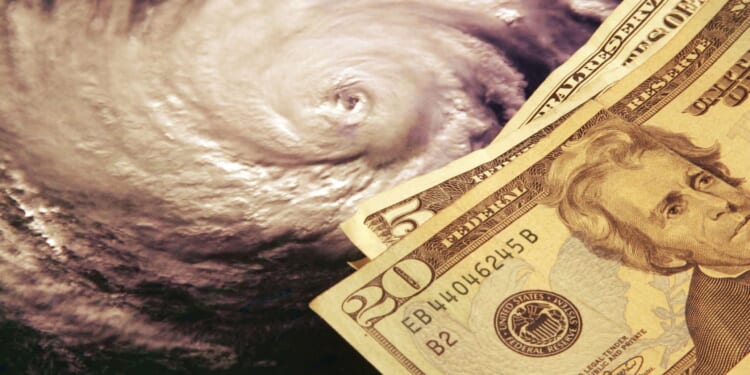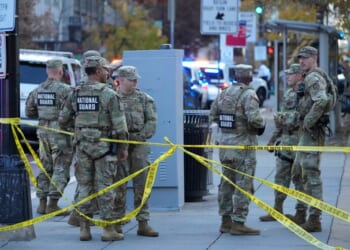In Washington today, the word “emergency” is a magic key; it unlocks powers Congress never granted, suspends the discipline of regular order and decorates bloated bills with provisions too dubious to pass on their own. What was once meant to be a narrow exception for genuine crises has become a routine pretext for government overreach—a means of inflating executive power and corroding the nation’s fiscal credibility.
Start with the most brazen claim, and one soon to be scrutinized by the Supreme Court: that a president may impose sweeping tariffs under the International Emergency Economic Powers Act (IEEPA) merely by declaring that a half-century of trade deficits constitutes an emergency.
Tariffs are taxes paid by Americans, and the Constitution assigns the power to tax to Congress. Yet the Trump administration argues that the president’s tariff power is beyond reproach because only he is the designator of emergencies.
The Washington Post‘s George Will summarized the stakes crisply: a statute being read as a roving license to restructure the economy and give the president “unreviewable power to impose taxes…of whatever amount, and for as long as he chooses.” Amicus briefs from across the political spectrum press the simple point that the IEEPA doesn’t authorize this, and an emergency cannot be a long-running condition that has coincided with rising American prosperity.
Congress, for its part, has effectively built a parallel budget out of the emergency label. Whenever caps on discretionary spending or pay-as-you-go (PAYGO) requirements threaten to bite, the label becomes something more. Use it and the spending simply doesn’t count against agreed-upon limits or require offsets.
The best recent accounting by the Cato Institute’s Dominik Lett puts the emergency-spending price tag at about $12.5 trillion (adjusted for inflation) since 1991. Count the roughly $2.5 trillion more in interest on the related debt and the number is around $15 trillion altogether.
Over the last decade, roughly one in every 10 dollars of budget authority has worn an emergency tag. That’s not a safety valve; it’s a standing workaround that has already swallowed even the modest savings promised by the Fiscal Responsibility Act two years ago.
What makes this practice so easy? It’s largely self-policed.
On paper, the Office of Management and Budget has a five-part test for emergency spending: It should be necessary, sudden, urgent, unforeseen, and not permanent. Congress rarely forces itself to demonstrate, item by item, that all five prongs are met. There’s no neutral referee. Once “designated as an emergency” appears in the bill and the president concurs, the amounts are exempt from caps and PAYGO scorecards.
And because this budget label is separate from more specific “national emergency” declarations under statutes like the Stafford Act or the National Emergencies Act, it quietly turns into a vehicle for funding routine projects. It’s such a procedural magic word that fiscal guardrails all but disappear.
Finally, even when a real crisis exists, so too does opportunism. Emergency bills move fast, face weak scrutiny, and become irresistible means for unrelated projects or those that Congress would never approve otherwise. This dynamic marred the 2012-13 Hurricane Sandy package and has recurred in other disaster bills, not because relief is illegitimate but because speed plus political cover invites provisions that would die in regular order.
The pandemic supercharged the pattern. Much of the $1.9 trillion American Rescue Plan had little to do with COVID-19. Only a small share went to direct health measures. Hundreds of billions funded unrelated legislative wishes, such as $350 billion for state and local governments whose revenues had already recovered, and large education and social welfare expansions designed to last well beyond the pandemic.
It was the emergency label that exempted this spending from budget rules, allowing legislators to pass a wish list of permanent programs under the guise of temporary relief. It’s having long-lasting effects, with the shutdown being in part about making some of the “emergency” measures—like the expanded Obamacare premium tax credits—permanent.
The stakes of the abuse of emergency labelling are no longer abstract. Interest costs on debt that results from the extra spending are crowding out core functions of government. Americans are hammered with “emergency” tariff costs. The next true crisis will arrive with less room to maneuver if we keep burning credibility on manufactured ones.
A republic that treats emergencies as a governing philosophy is a republic that lives without its safeguards. We must put the word back in its place: as one describing something rare, reviewable, temporary, and paid for.
COPYRIGHT 2025 CREATORS.COM
















